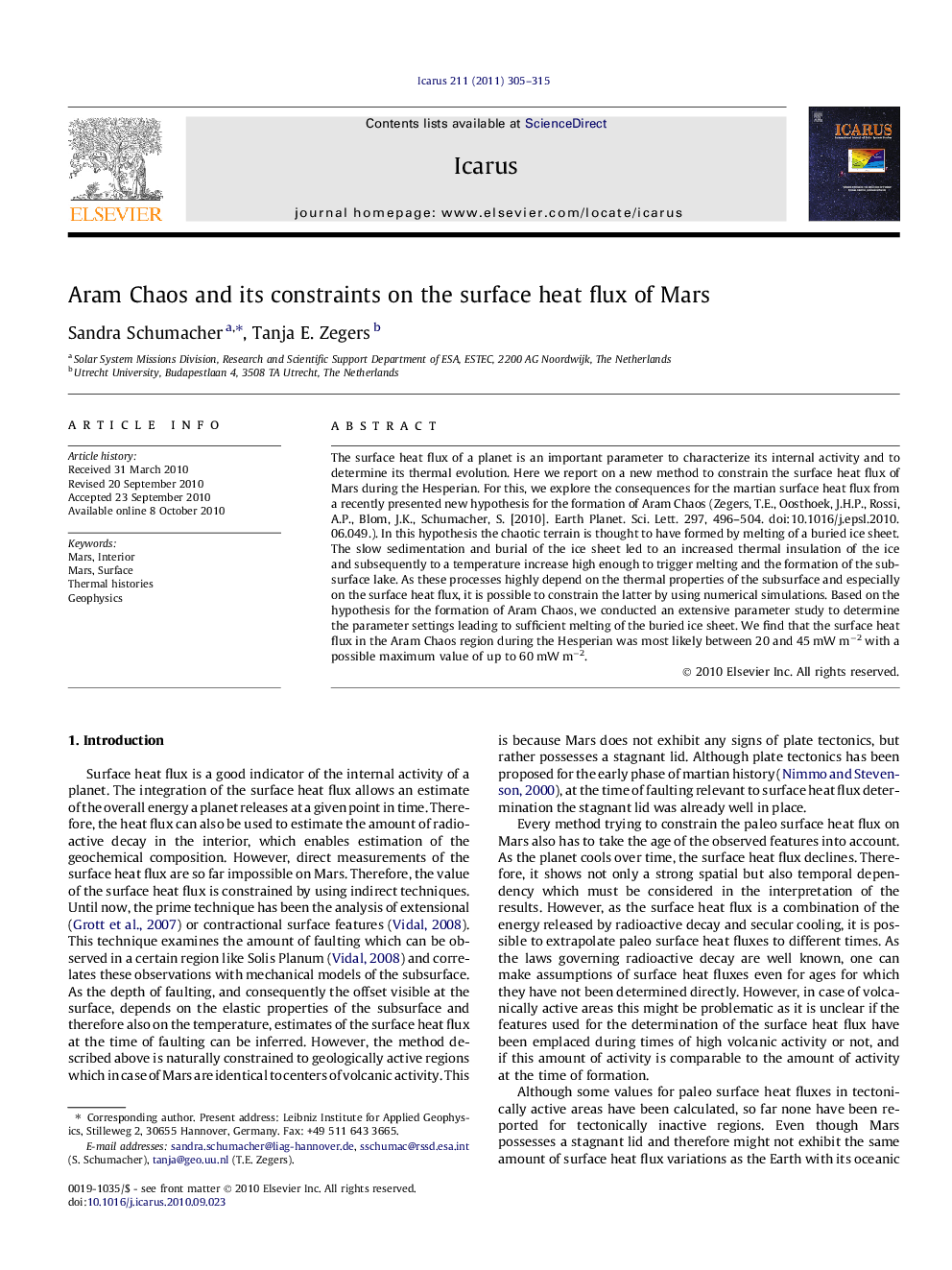| Article ID | Journal | Published Year | Pages | File Type |
|---|---|---|---|---|
| 1773775 | Icarus | 2011 | 11 Pages |
The surface heat flux of a planet is an important parameter to characterize its internal activity and to determine its thermal evolution. Here we report on a new method to constrain the surface heat flux of Mars during the Hesperian. For this, we explore the consequences for the martian surface heat flux from a recently presented new hypothesis for the formation of Aram Chaos (Zegers, T.E., Oosthoek, J.H.P., Rossi, A.P., Blom, J.K., Schumacher, S. [2010]. Earth Planet. Sci. Lett. 297, 496–504. doi:10.1016/j.epsl.2010.06.049.). In this hypothesis the chaotic terrain is thought to have formed by melting of a buried ice sheet. The slow sedimentation and burial of the ice sheet led to an increased thermal insulation of the ice and subsequently to a temperature increase high enough to trigger melting and the formation of the subsurface lake. As these processes highly depend on the thermal properties of the subsurface and especially on the surface heat flux, it is possible to constrain the latter by using numerical simulations. Based on the hypothesis for the formation of Aram Chaos, we conducted an extensive parameter study to determine the parameter settings leading to sufficient melting of the buried ice sheet. We find that the surface heat flux in the Aram Chaos region during the Hesperian was most likely between 20 and 45 mW m−2 with a possible maximum value of up to 60 mW m−2.
